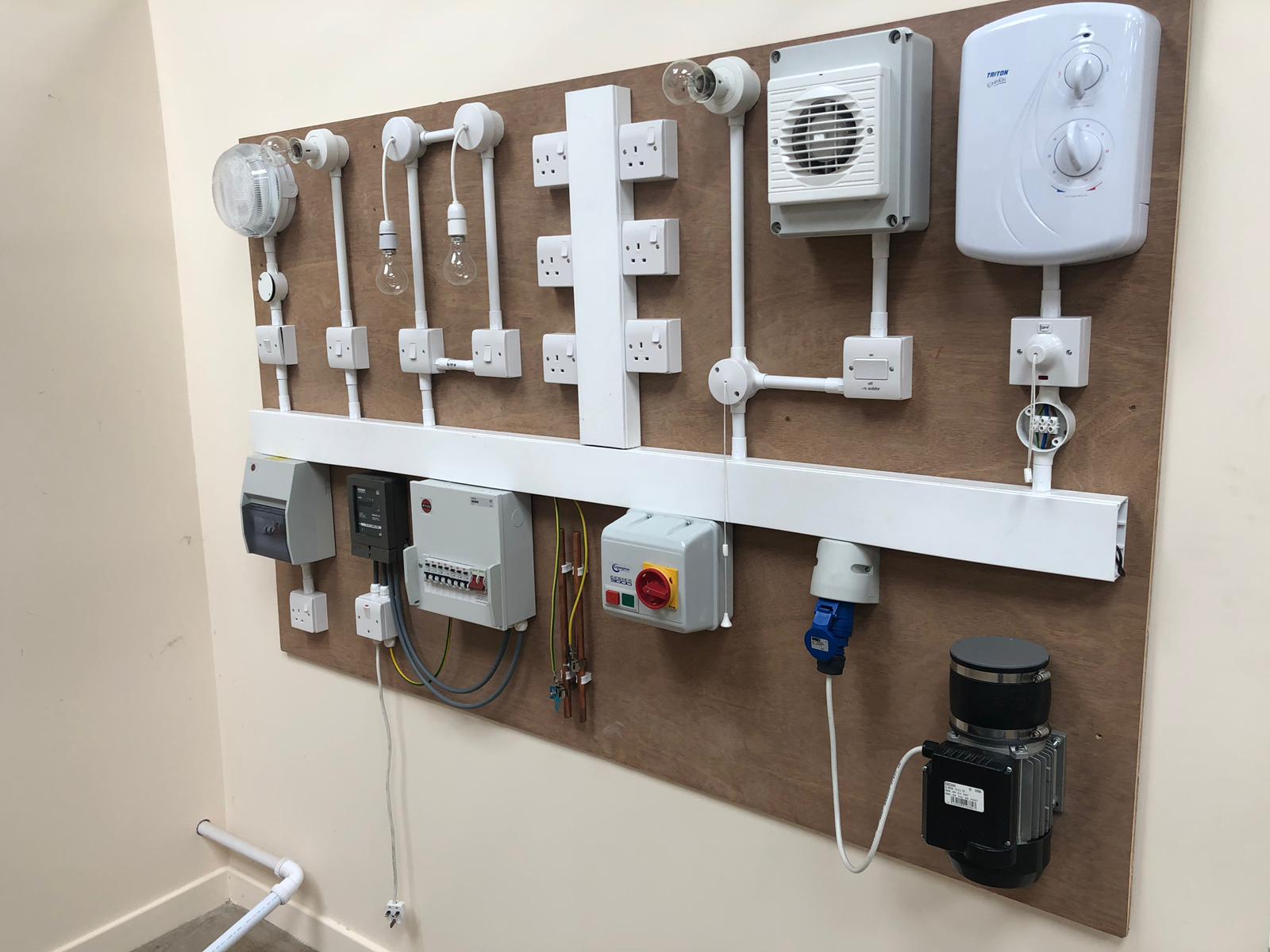Professional BRE Electrical Melbourne Services for Your Electrical Tasks
Wiki Article
Debunking Electrical Setup: Understanding Codes and Laws for a Lawful and Safe Arrangement
In the realm of electric installation, adherence to codes and laws is critical to make certain both legitimacy and safety and security. The journey to debunking electrical installation goes beyond plain familiarity with guidelines; it demands a profound grasp of just how to implement risk-free electric practices successfully.Relevance of Electrical Codes
The adherence to electrical codes is critical in guaranteeing the security and integrity of electrical setups. Electric codes work as a collection of standards and guidelines that dictate the appropriate layout, installation, and maintenance of electrical systems. These codes are established to lessen the threat of electrical risks, fires, and other security worries that might emerge from faulty electrical work.
In addition, electrical codes are regularly upgraded to integrate new innovations, best techniques, and security measures. Remaining upgraded with these codes is necessary for professionals in the electric industry to make sure that their work satisfies the most up to date security standards. Inevitably, the value of electric codes exists in developing a secure and efficient electrical framework that benefits both people and neighborhoods.
Trick Regulations for Safety And Security
Several essential laws govern the security criteria in electrical setups. One vital regulation is the National Electrical Code (NEC), which supplies standards for safe electrical style, installation, and evaluation to secure individuals and home from electric threats. The NEC covers aspects such as electrical wiring techniques, grounding, overcurrent defense, and tools installation to guarantee a risk-free electrical system.One more critical regulation is the Occupational Safety and Health Administration (OSHA) requirements, which concentrate on the security of employees associated with electric installments (BRE Electrical). OSHA policies include requirements for proper training, safety procedures, and personal protective tools to prevent workplace accidents and injuries
Moreover, the International Electrotechnical Compensation (IEC) standards aim to integrate electric installation regulations on a worldwide scale. These standards address concerns like electrical equipment safety and security, electromagnetic compatibility, and energy performance to promote uniformity and safety and security in electrical installments worldwide.
Conformity with these key laws is important to guarantee the safety and validity of electrical installments, safeguarding both individuals and building from the dangers related to power.
Comprehending National Electric Code
Key guidelines such as the National Electrical Code find out here (NEC) supply important standards for safe electric design, setup, and inspection to make sure the defense of individuals and building from electrical threats. The NEC, also understood as NFPA 70, is a comprehensive set of criteria for electrical setups that are upgraded every 3 years. It is established by the National Fire Security Organization (NFPA) and is commonly taken on throughout the United States.The NEC covers different facets of electric work, consisting of circuitry methods, grounding, overcurrent protection, and tools installment. It aims to secure individuals and residential or commercial property by resolving potential dangers connected with electric systems. Compliance with the NEC is normally applied by local authorities having jurisdiction (AHJs), such as building code officials and assessors.
Understanding the NEC is important for electric professionals, designers, and examiners to make sure that installments meet the necessary security demands. By sticking to the NEC standards, professionals can help avoid electrical accidents and guarantee the dependability of electrical systems in domestic, industrial, that site and industrial settings.

Compliance With Local Building Ordinance
Comprehending and adhering to local building codes is crucial for guaranteeing the security and conformity of electric installations within a particular territory. These codes detail details needs for electrical installments, such as the kind of circuitry to be made use of, placement of electrical outlets, basing techniques, and load capabilities.
When it involves electric installments, failing to comply with local building codes can result in major repercussions. Non-compliant setups might present safety and security threats, raise the threat of electrical fires, and lead to costly fines or lawful concerns. In addition, insurance firms might reject to cover problems arising from setups that do not satisfy local building code requirements. Therefore, it is crucial for electrical contractors and specialists to stay informed about and purely abide by the regional building regulations applicable to their projects.
Making Certain Safe Electrical Practices
Practicing stringent adherence to established safety and security procedures is crucial in the area of electrical installments to reduce potential dangers and guarantee the health of people and residential properties. Safety in electric job encompasses numerous aspects, beginning with the appropriate training of personnel entailed in installment, maintenance, and fixing. It is vital to follow maker instructions thoroughly when dealing with electrical elements and tools. Prior to beginning any kind of work, it is critical to conduct a comprehensive threat analysis to determine prospective hazards and execute safety nets. Using individual safety equipment (PPE) such as protected handwear covers, shatterproof glass, and non-conductive footwear is non-negotiable to protect versus electrical shocks and arc flashes. Normal tools inspections, testing, and upkeep timetables are indispensable to spot and remedy mistakes prior to they rise right into safety and security hazards. Additionally, adherence to appropriate lockout-tagout treatments throughout maintenance activities is vital to stop unintended energization of circuits. By focusing on risk-free methods, electrical installations look what i found can function efficiently while minimizing the likelihood of accidents or damages.Verdict
Finally, adherence to electrical codes and laws is important for guaranteeing the safety and security and legitimacy of electrical setups. Understanding the National Electric Code and conformity with local building regulations are vital for a safe configuration. By following these standards and practicing risk-free electric practices, people can avoid potential threats and guarantee the correct performance of their electric systems.Report this wiki page